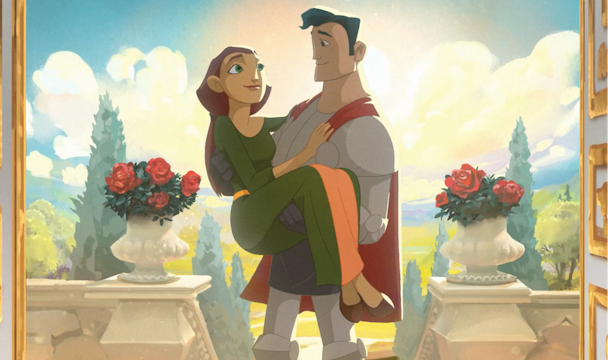Alzheimer’s charity says investing in brand isn’t ‘fluff,’ it’s ‘critical’ to finding cure
The UK Alzheimer charity has released a heartbreaking campaign and brought the first-ever ad slot on Channel 4 News. The campaign is the culmination of a significant rebrand at Alzheimer’s Research UK focused on finding a cure.

Alzheimer's Research UK drops 'Change the Ending' campaign / The Beyond Collective
In May, Alzheimer’s Research UK overhauled its organization and brand messaging to reflect that a cure was on the horizon but that a lot more funding and resource was still needed.
As Lorna Dawson, head of brand at the charity, tells The Drum: “It felt like the right time to really put our stake in the ground and say we are here to find a cure and we want to own that and drive it forward.”
To cut through and be disruptive, Dawson was given full backing to completely “re-evaluate” the charity’s marketing strategy and invest in the brand. “Brand isn’t just changing the color palette, it’s not just the fluff or the big expense or the fancy TV things. The brand plays an absolutely critical part as an enabler to achieve the ultimate vision of a world that’s free from the fear, harm and heartbreak of dementia.”
Advertisement
Alzheimer’s Research UK tasked The Beyond Collective – which houses the creative agency Above+Beyond, media shop Yonder Media and strategy specialist Frontier – to launch the charity’s new brand positioning, ‘For A Cure,’ following a year-long review of the brand.
Dawson asked the collective agency to create “bolder” and more “unapologetic” marketing.
The outcome is ‘Change the Ending,’ a two-minute-long, part live-action part animation film voiced by Oscar-winning actor Oliva Colman. It follows the story of a prince and princess whose fairytale is destroyed after the prince develops dementia. The conclusion brings viewers into the real world and sees the princess kissing her prince one final time as he passes away.
Launching today, World Alzheimer’s Day (September 21), on Channel 4 News, the full-length version will run on “cherry-picked” TV shows where there are high levels of engagement, as well as in cinemas. There are additional 30- and 10-second cut-downs for TV and social media, with Yonder behind the media plan.
“We hope that it will disrupt and get cut through and just get eyes on it,” says Dawson. “The media plans have been all about those high-impact placements where we’re going to capture people’s attention.”
Advertisement
Along with engagement, the campaign needs to get people to take action and to move them down the funnel. The KPIs will be measured not just on reach but on the actions it moves people to take. “It’s not just about having a nice media plan in place; it’s about also making sure that all of our journeys and actions are clear further down that pipeline, so that we have really added value to the organization.”
The agency brief
Above+Beyond chief creative officer Dom Goldman says the brief was about making people care enough about finding a cure for dementia to do something about it. “We needed to creatively confront people, give them no option but to engage with the problem. Alzheimer’s Research UK’s competitors outspend it, so we needed to do something that gets people talking and sharing and to build empathy for the disease.”
The film’s misdirection is key to the campaign, says Goldman. “We took the trope of Disney and how that world portrays everything as being happy ever after. Then, once we established that theme, we could bend it. We are trying to play this progressive, destructive disease out as the narrative arc.” For example, the film shows the prince wandering in the forest at night, as well as being paranoid and locking himself away in a wardrobe.
Suggested newsletters for you
Animation was a helpful tool in showing the symptoms of the disease in an appropriate and tasteful way, says Goldman, adding that you can “push a lot harder” with animation than with live action – just like Disney is able to have “intense emotional scenes” because it doesn’t look and feel like the real world.
Once the amination abruptly ended, though, is when the live-action had to be as “real as possible, as cinematic as possible, as powerful as possible and as respectful as possible,” he says. The film relies on the Pavlovian response of an audience that is expecting a happy ending. “That was really crucial from day one – we had to make sure the audience felt the fairytale and that is when we could take them on the pivot to a path that was unfamiliar.”
Behind the campaign are the very real statistics that one in two people will be affected by dementia in their lifetime; it’s the leading cause of death in the UK and every three minutes someone receives a dementia diagnosis, yet Alzheimer’s research receives five times less funding than cancer research.
“The brand isn’t just here for the sake of brand or to look good or tell an interesting story; the brand’s here because it’s absolutely critical to driving organizational objectives, it’s critical to finding a cure for dementia – which is ultimately what we’re here for,” concludes Dawson.

